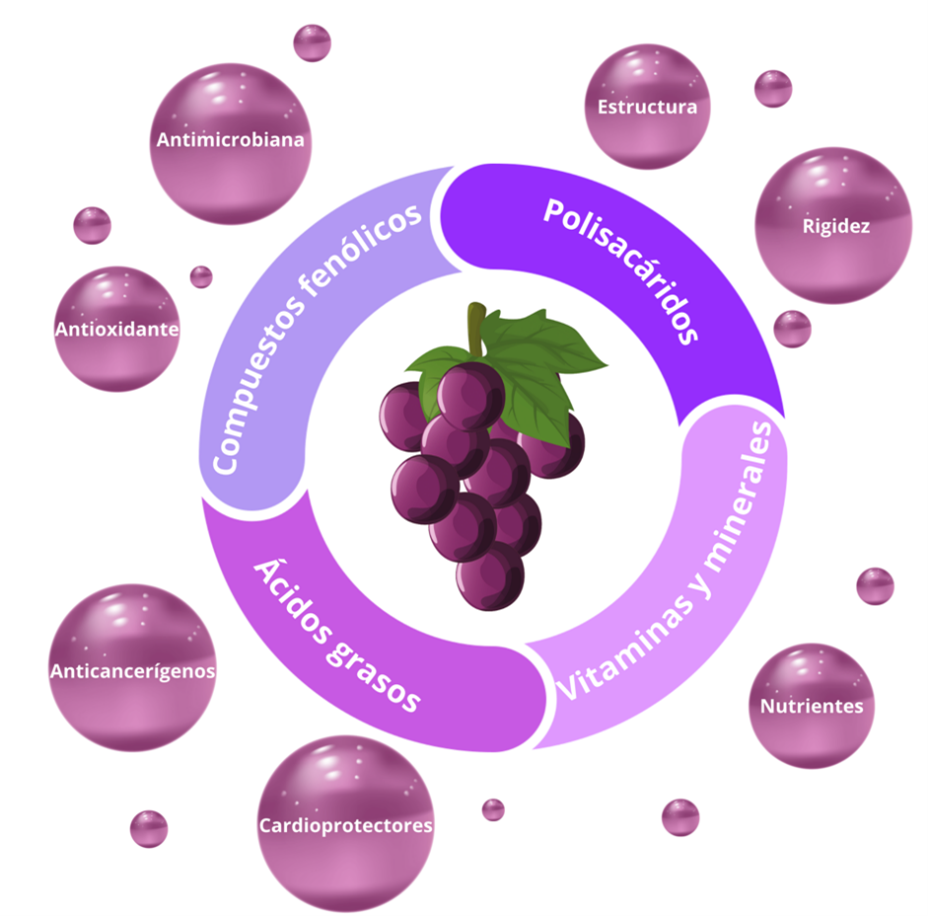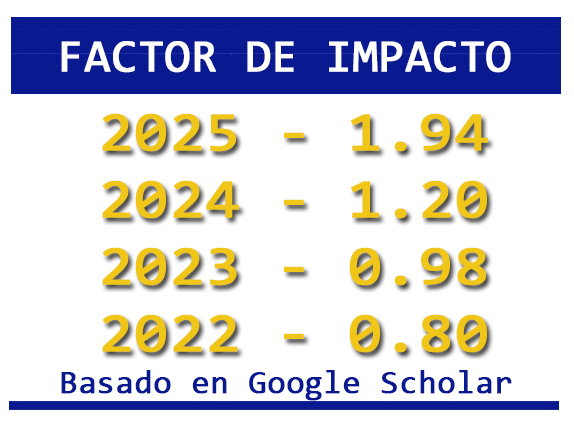Transformando subproductos agroindustriales en materiales innovadores: el caso de la industria vitivinícola
DOI:
https://doi.org/10.36790/epistemus.v19i38.402Palabras clave:
materiales, subproductos, valorización, industria vitivinícolaResumen
La problemática de la contaminación por plástico se destaca por ser uno de los desafíos más apremiantes que la sociedad debe afrontar. En respuesta a esta preocupación, se han implementado soluciones innovadoras mediante el aprovechamiento de subproductos agroindustriales para desarrollar materiales que, aunque similares en propiedades a los plásticos convencionales, podrían ofrecer beneficios ambientales significativos. Este artículo de divulgación examina el estado actual de los subproductos generados por la industria vitivinícola y propone su valorización como una estrategia necesaria para crear un material biodegradable de valor agregado, con el fin de promover la bioeconomía circular y reducir significativamente la dependencia del plástico convencional, contribuyendo así a la mitigación del impacto ambiental.
Descargas
Citas
P. Stoett, V. M. Scrich, C. I. Elliff, M. M. Andrade, N. de M. Grilli, y A. Turra, «Global plastic pollution, sustainable development, and plastic justice», World Development, vol. 184, p. 106756, dic. 2024, doi: 10.1016/j.worlddev.2024.106756. DOI: https://doi.org/10.1016/j.worlddev.2024.106756
OECD, «Plastic pollution is growing relentlessly as waste management and recycling fall short, says OECD». [En línea]. Disponible en: https://www.oecd.org/en/about/news/press-releases/2022/02/plastic-pollution-is-growing-relentlessly-as-waste-management-and-recycling-fall-short.html
I. K Sani, M. Masoudpour-Behabadi, M. Alizadeh Sani, H. Motalebinejad, A.S.M. Juma et al., «Value-added utilization of fruit and vegetable processing by-products for the manufacture of biodegradable food packaging films», Food Chemistry, vol. 405, p. 134964, mar. 2023, doi: 10.1016/j.foodchem.2022.134964. DOI: https://doi.org/10.1016/j.foodchem.2022.134964
M. Islam, T. Xayachak, N. Haque, D. Lau, M. Bhuiyan, y B. K. Pramanik, «Impact of bioplastics on environment from its production to end-of-life», Process Safety and Environmental Protection, vol. 188, pp. 151-166, ago. 2024, doi: 10.1016/j.psep.2024.05.113. DOI: https://doi.org/10.1016/j.psep.2024.05.113
UNEP, «Single-use plastics: A roadmap for sustainability | UNEP - UN Environment Programme». Accedido: 16 de febrero de 2025. [En línea]. Disponible en: https://www.unep.org/resources/report/single-use-plastics-roadmap-sustainability
P. G. C. Nayanathara Thathsarani Pilapitiya y A. S. Ratnayake, «The world of plastic waste: A review», Cleaner Materials, vol. 11, p. 100220, mar. 2024, doi: 10.1016/j.clema.2024.100220. DOI: https://doi.org/10.1016/j.clema.2024.100220
SEMARNAT, «Océanos, inundados de plástico», gob.mx. Accedido: 16 de febrero de 2025. [En línea]. Disponible en: http://www.gob.mx/semarnat/articulos/oceanos-inundados-de-plastico
Md. G. Kibria, N. I. Masuk, R. Safayet, H. Q. Nguyen, y M. Mourshed, «Plastic Waste: Challenges and Opportunities to Mitigate Pollution and Effective Management», Int J Environ Res, vol. 17, n.o 1, p. 20, ene. 2023, doi: 10.1007/s41742-023-00507-z. DOI: https://doi.org/10.1007/s41742-023-00507-z
K. Molina-Besch y H. Keszleri, «Exploring the industrial perspective on biobased plastics in food packaging applications – Insights from Sweden», Sustainable Production and Consumption, vol. 35, pp. 72-84, ene. 2023, doi: 10.1016/j.spc.2022.10.018. DOI: https://doi.org/10.1016/j.spc.2022.10.018
A. P. Thomas, V. P. Kasa, B. K. Dubey, R. Sen, y A. K. Sarmah, «Synthesis and commercialization of bioplastics: Organic waste as a sustainable feedstock», Science of The Total Environment, vol. 904, p. 167243, dic. 2023, doi: 10.1016/j.scitotenv.2023.167243. DOI: https://doi.org/10.1016/j.scitotenv.2023.167243
M. Romero-Sáez, «Los residuos agroindustriales, una oportunidad para la economía circular», TecnoLógicas, vol. 25, n.o 54, ago. 2022, doi: 10.22430/22565337.2505. DOI: https://doi.org/10.22430/22565337.2505
E. Díaz-Montes, «RESIDUOS AGROALIMENTARIOS ¿QUÉ SON? ¿QUIÉN LOS GENERA? Y ¿POR QUÉ SON VALIOSOS?», Frontera Biotecnológica, pp. 9-15, 2022.
N. Dios Avila, «Propiedades composicionales, estructurales y fisicoquímicas de las semillas de aguacate y sus potenciales usos agroindustriales», CIENCIA & TECNOLOGÍA AGROPECUARIA, 2023, doi: https://doi.org/10.21930/rcta.vol24_num1_art:2607. DOI: https://doi.org/10.21930/rcta.vol24_num1_art:2607
L. D. la T. López, M. E. T. Cortés, y X. M. Espino, «Desarrollo Sustentable y Aprovechamiento del Residuo de la Caña de Azúcar», Revista Multidisciplinaria de Avances de Investigación, vol. 7, n.o 1, pp. 12-26, abr. 2021, Accedido: 16 de febrero de 2025. [En línea]. Disponible en: https://www.remai.ipn.mx/index.php/REMAI/article/view/79
T. Abreu, P. Sousa, J. Gonçalves, N. Hontman, J. Teixeira et al., «Grape Pomace as a Renewable Natural Biosource of Value-Added Compounds with Potential Food Industrial Applications», Beverages, vol. 10, n.o 2, p. 45, jun. 2024, doi: 10.3390/beverages10020045. DOI: https://doi.org/10.3390/beverages10020045
BIOFASE, «Biofase Europa | Productos biodegradables a partir del aguacate». [En línea]. Disponible en: https://biofase.eu/
H. D. C. Castrillón, C. M. G. Aguilar, y B. E. A. Álvarez, «Circular Economy Strategies: Use of Corn Waste to Develop Biomaterials», Sustainability, vol. 13, n.o 15, p. 8356, ene. 2021, doi: 10.3390/su13158356. DOI: https://doi.org/10.3390/su13158356
W. Jonglertjunya, T. Juntong, N. Pakkang, N. Srimarut, y C. Sakdaronnarong, «Properties of lignin extracted from sugarcane bagasse and its efficacy in maintaining postharvest quality of limes during storage», LWT - Food Science and Technology, vol. 57, n.o 1, pp. 116-125, jun. 2014, doi: 10.1016/j.lwt.2013.11.042. DOI: https://doi.org/10.1016/j.lwt.2013.11.042
C. Pongsuwan, P. Boonsuk, D. Sermwittayawong, P. Aiemcharoen, J. Mayakun, y K. Kaewtatip, «Banana inflorescence waste fiber: An effective filler for starch-based bioplastics», Industrial Crops and Products, vol. 180, p. 114731, jun. 2022, doi: 10.1016/j.indcrop.2022.114731. DOI: https://doi.org/10.1016/j.indcrop.2022.114731
B. P. Costa, D. Carpiné, M. Ikeda, I.A.E. Pazzini, F.E. da Silva Bambirra Alves et al., «Bioactive coatings from non-conventional loquat (Eriobotrya japonica Lindl.) seed starch to extend strawberries shelf-life: An antioxidant packaging», Progress in Organic Coatings, vol. 175, p. 107320, feb. 2023, doi: 10.1016/j.porgcoat.2022.107320. DOI: https://doi.org/10.1016/j.porgcoat.2022.107320
D. Panwar, A. Saini, P. S. Panesar, y H. K. Chopra, «Unraveling the scientific perspectives of citrus by-products utilization: Progress towards circular economy», Trends in Food Science & Technology, vol. 111, pp. 549-562, may 2021, doi: 10.1016/j.tifs.2021.03.018. DOI: https://doi.org/10.1016/j.tifs.2021.03.018
D. A. Campos, R. Gómez-García, A. A. Vilas-Boas, A. R. Madureira, y M. M. Pintado, «Management of Fruit Industrial By-Products—A Case Study on Circular Economy Approach», Molecules, vol. 25, n.o 2, p. 320, ene. 2020, doi: 10.3390/molecules25020320. DOI: https://doi.org/10.3390/molecules25020320
D. Nagarajan, D.-J. Lee, C.-Y. Chen, y J.-S. Chang, «Resource recovery from wastewaters using microalgae-based approaches: A circular bioeconomy perspective», Bioresource Technology, vol. 302, p. 122817, abr. 2020, doi: 10.1016/j.biortech.2020.122817. DOI: https://doi.org/10.1016/j.biortech.2020.122817
T. V. Tran, D. T. C. Nguyen, T. T. T. Nguyen, D. H. Nguyen, M. Alhassan et al., «A critical review on pineapple (Ananas comosus) wastes for water treatment, challenges and future prospects towards circular economy», Science of The Total Environment, vol. 856, p. 158817, ene. 2023, doi: 10.1016/j.scitotenv.2022.158817. DOI: https://doi.org/10.1016/j.scitotenv.2022.158817
A. R. Soares Mateus, A. Pena, y A. Sanches-Silva, «Unveiling the potential of bioactive compounds in vegetable and fruit by-products: Exploring phytochemical properties, health benefits, and industrial opportunities», Current Opinion in Green and Sustainable Chemistry, vol. 48, p. 100938, ago. 2024, doi: 10.1016/j.cogsc.2024.100938. DOI: https://doi.org/10.1016/j.cogsc.2024.100938
A. Chen, Y. J. Guan, M. Bustamante, L. Uribe, L. Uribe-Lorío et al., «Production of renewable fuel and value-added bioproducts using pineapple leaves in Costa Rica», Biomass and Bioenergy, vol. 141, p. 105675, oct. 2020, doi: 10.1016/j.biombioe.2020.105675. DOI: https://doi.org/10.1016/j.biombioe.2020.105675
H. Wu, Y. Lei, R. Zhu, M. Zhao, J. Lu et al., «Preparation and characterization of bioactive edible packaging films based on pomelo peel flours incorporating tea polyphenol», Food Hydrocolloids, vol. 90, pp. 41-49, may 2019, doi: 10.1016/j.foodhyd.2018.12.016. DOI: https://doi.org/10.1016/j.foodhyd.2018.12.016
S. B. Anoraga, R. Shamsudin, M. H. Hamzah, S. Sharif, y A. D. Saputro, «Cocoa by-products: A comprehensive review on potential uses, waste management, and emerging green technologies for cocoa pod husk utilization», Heliyon, vol. 10, n.o 16, p. e35537, ago. 2024, doi: 10.1016/j.heliyon.2024.e35537. DOI: https://doi.org/10.1016/j.heliyon.2024.e35537
N. Aguilar-Rivera, «Efecto del almacenamiento de bagazo de caña en las propiedades físicas de celulosa grado papel», Ingeniería, investigación y tecnología, vol. 12, n.o 2, pp. 189-197, jun. 2011, Accedido: 16 de febrero de 2025. [En línea]. Disponible en: http://www.scielo.org.mx/scielo.php?script=sci_abstract&pid=S1405-77432011000200008&lng=es&nrm=iso&tlng=es DOI: https://doi.org/10.22201/fi.25940732e.2011.12n2.019
G. K. Sodhi, G. Kaur, N. George, H. K. Walia, D. Sillu et al., «Waste to wealth: microbial-based valorization of grape pomace for nutraceutical, cosmetic, and therapeutic applications to promote circular economy», Process Safety and Environmental Protection, vol. 188, pp. 1464-1478, ago. 2024, doi: 10.1016/j.psep.2024.06.059. DOI: https://doi.org/10.1016/j.psep.2024.06.059
M. López-Astorga, C. C. Molina-Domínguez, M. Ovando-Martínez, y M. Leon-Bejarano, «Orujo de Uva: Más que un Residuo, una Fuente de Compuestos Bioactivos», EPISTEMUS, vol. 16, n.o 33, pp. 115-122, 2022, doi: 10.36790/epistemus.v16i33.283. DOI: https://doi.org/10.36790/epistemus.v16i33.283
P. Ferreira-Santos, C. Nobre, R. M. Rodrigues, Z. Genisheva, C. Botelho, y J. A. Teixeira, «Extraction of phenolic compounds from grape pomace using ohmic heating: Chemical composition, bioactivity and bioaccessibility», Food Chemistry, vol. 436, p. 137780, mar. 2024, doi: 10.1016/j.foodchem.2023.137780. DOI: https://doi.org/10.1016/j.foodchem.2023.137780
J. Wen, G. Xu, A. Zhang, W. Ma, y G. Jin, «Emerging technologies for rapid non-destructive testing of grape quality: A review», Journal of Food Composition and Analysis, vol. 133, p. 106446, sep. 2024, doi: 10.1016/j.jfca.2024.106446. DOI: https://doi.org/10.1016/j.jfca.2024.106446
J. S. Câmara, S. Lourenço, C. Silva, A. Lopes, C. Andrade, y R. Perestrelo, «Exploring the potential of wine industry by-products as source of additives to improve the quality of aquafeed», Microchemical Journal, vol. 155, p. 104758, jun. 2020, doi: 10.1016/j.microc.2020.104758. DOI: https://doi.org/10.1016/j.microc.2020.104758
A. Soceanu, S. Dobrinas, A. Sirbu, N. Manea, y V. Popescu, «Economic aspects of waste recovery in the wine industry. A multidisciplinary approach», Science of The Total Environment, vol. 759, p. 143543, mar. 2021, doi: 10.1016/j.scitotenv.2020.143543. DOI: https://doi.org/10.1016/j.scitotenv.2020.143543
L. Crespo-López, A. Martínez-Ramirez, E. Sebastián, y G. Cultrone, «Pomace from the wine industry as an additive in the production of traditional sustainable lightweight eco-bricks», Applied Clay Science, vol. 243, p. 107084, oct. 2023, doi: 10.1016/j.clay.2023.107084. DOI: https://doi.org/10.1016/j.clay.2023.107084
Organización Internacional de la Viña y el Vino, «Perspectivas de la producción mundial de vino». [En línea]. Disponible en: https://www.oiv.int/sites/default/files/documents/Perspectivas_de_la_produccion_mundial_de_vino_en_2022_OIV_0.pdf
Secretaría de Agricultura y Desarrollo Rural, «Producción de uva en México 2022», 2022. [En línea]. Disponible en: https://www.gob.mx/cms/uploads/attachment/file/771603/Producci_n_Uva_en_M_xico.pdf
M. Spinei y M. Oroian, «The Potential of Grape Pomace Varieties as a Dietary Source of Pectic Substances», Foods, vol. 10, n.o 4, p. 867, abr. 2021, doi: 10.3390/foods10040867. DOI: https://doi.org/10.3390/foods10040867
A. S. C. Teles, D. W. H. Chávez, M. C. P. de A. Santiago, L. M. F. Gottschalk, y R. V. Tonon, «Composition of different media for enzyme production and its effect on the recovery of phenolic compounds from grape pomace», Biocatalysis and Agricultural Biotechnology, vol. 35, p. 102067, ago. 2021, doi: 10.1016/j.bcab.2021.102067. DOI: https://doi.org/10.1016/j.bcab.2021.102067
C. Beres, G. N. S. Costa, I. Cabezudo, N. K. da Silva-James, A. S. C. Teles et al., «Towards integral utilization of grape pomace from winemaking process: A review», Waste Management, vol. 68, pp. 581-594, oct. 2017, doi: 10.1016/j.wasman.2017.07.017. DOI: https://doi.org/10.1016/j.wasman.2017.07.017
P. Górnaś y M. Rudzińska, «Seeds recovered from industry by-products of nine fruit species with a high potential utility as a source of unconventional oil for biodiesel and cosmetic and pharmaceutical sectors», Industrial Crops and Products, vol. 83, pp. 329-338, may 2016, doi: 10.1016/j.indcrop.2016.01.021. DOI: https://doi.org/10.1016/j.indcrop.2016.01.021
M. D. Garrido, M. Auqui, N. Martí, y M. B. Linares, «Effect of two different red grape pomace extracts obtained under different extraction systems on meat quality of pork burgers», LWT - Food Science and Technology, vol. 44, n.o 10, pp. 2238-2243, dic. 2011, doi: 10.1016/j.lwt.2011.07.003. DOI: https://doi.org/10.1016/j.lwt.2011.07.003
V. B. de Souza, A. Fujita, M. Thomazini, E. R. da Silva, J. F. Luco et al., «Functional properties and stability of spray-dried pigments from Bordo grape (Vitis labrusca) winemaking pomace», Food Chemistry, vol. 164, pp. 380-386, dic. 2014, doi: 10.1016/j.foodchem.2014.05.049. DOI: https://doi.org/10.1016/j.foodchem.2014.05.049
A. S. Ferreira, C. Nunes, A. Castro, P. Ferreira, y M. A. Coimbra, «Influence of grape pomace extract incorporation on chitosan films properties», Carbohydrate Polymers, vol. 113, pp. 490-499, nov. 2014, doi: 10.1016/j.carbpol.2014.07.032. DOI: https://doi.org/10.1016/j.carbpol.2014.07.032
B. E. Ozcan, N. Tetik, y H. S. Aloglu, «Polysaccharides from fruit and vegetable wastes and their food applications: A review», International Journal of Biological Macromolecules, vol. 276, p. 134007, sep. 2024, doi: 10.1016/j.ijbiomac.2024.134007. DOI: https://doi.org/10.1016/j.ijbiomac.2024.134007
A. Gamage, P. Thiviya, A. Liyanapathiranage, M.L.D. Wasana, Y. Jayakodi et al., «Polysaccharide-Based Bioplastics: Eco-Friendly and Sustainable Solutions for Packaging», Journal of Composites Science, vol. 8, n.o 10, p. 413, oct. 2024, doi: 10.3390/jcs8100413. DOI: https://doi.org/10.3390/jcs8100413
L. Shi, Q. He, J. Li, Y. Liu, Y. Cao et al., «Polysaccharides in fruits: Biological activities, structures, and structure-activity relationships and influencing factors-A review», Food Chemistry, vol. 451, p. 139408, sep. 2024, doi: 10.1016/j.foodchem.2024.139408. DOI: https://doi.org/10.1016/j.foodchem.2024.139408
Y. Mederos-Torres, P. Bernabé-Galloway, y M. Á. Ramírez-Arrebato, «Películas basadas en polisacáridos como recubrimientos biodegradables y su empleo en la postcosecha de los frutos», Cultivos Tropicales, vol. 41, n.o 3, 2020, Accedido: 16 de febrero de 2025. [En línea]. Disponible en: https://www.redalyc.org/journal/1932/193266151009/html/
S. Pérez, K. Mazeau, y C. Hervé du Penhoat, «The three-dimensional structures of the pectic polysaccharides», Plant Physiology and Biochemistry, vol. 38, n.o 1, pp. 37-55, ene. 2000, doi: 10.1016/S0981-9428(00)00169-8. DOI: https://doi.org/10.1016/S0981-9428(00)00169-8
A. K. Chakka y A. S. Babu, «Bioactive Compounds of Winery by-products: Extraction Techniques and their Potential Health Benefits», Applied Food Research, vol. 2, n.o 1, p. 100058, jun. 2022, doi: 10.1016/j.afres.2022.100058. DOI: https://doi.org/10.1016/j.afres.2022.100058
N. N. T. Tien, H. T. Nguyen, N. L. Le, T. T. Khoi, y A. Richel, «Biodegradable films from dragon fruit (Hylocereus polyrhizus) peel pectin and potato starches crosslinked with glutaraldehyde», Food Packaging and Shelf Life, vol. 37, p. 101084, jun. 2023, doi: 10.1016/j.fpsl.2023.101084. DOI: https://doi.org/10.1016/j.fpsl.2023.101084
A. N. Adilah, B. Jamilah, M. A. Noranizan, y Z. A. N. Hanani, «Utilization of mango peel extracts on the biodegradable films for active packaging», Food Packaging and Shelf Life, vol. 16, pp. 1-7, jun. 2018, doi: 10.1016/j.fpsl.2018.01.006. DOI: https://doi.org/10.1016/j.fpsl.2018.01.006
S. Tiekstra, A. Dopico-Parada, H. Koivula, J. Lahti, y M. Buntinx, «Holistic Approach to a Successful Market Implementation of Active and Intelligent Food Packaging», Foods, vol. 10, n.o 2, p. 465, feb. 2021, doi: 10.3390/foods10020465. DOI: https://doi.org/10.3390/foods10020465
S.K. Bhatia, S.V. Otari, J.M. Jeon, R. Gurav, Y.K. Choi et al., «Biowaste-to-bioplastic (polyhydroxyalkanoates): Conversion technologies, strategies, challenges, and perspective», Bioresource Technology, vol. 326, p. 124733, abr. 2021, doi: 10.1016/j.biortech.2021.124733. DOI: https://doi.org/10.1016/j.biortech.2021.124733
É. da C. Monção, C. V. B. Grisi, J. de Moura Fernandes, P. S. Souza, y A. L. de Souza, «Active packaging for lipid foods and development challenges for marketing», Food Bioscience, vol. 45, p. 101370, feb. 2022, doi: 10.1016/j.fbio.2021.101370. DOI: https://doi.org/10.1016/j.fbio.2021.101370
B. G. Werner, J. L. Koontz, y J. M. Goddard, «Hurdles to commercial translation of next generation active food packaging technologies», Current Opinion in Food Science, vol. 16, pp. 40-48, ago. 2017, doi: 10.1016/j.cofs.2017.07.007. DOI: https://doi.org/10.1016/j.cofs.2017.07.007
S. Notaro, E. Lovera, y A. Paletto, «Consumers’ preferences for bioplastic products: A discrete choice experiment with a focus on purchase drivers», Journal of Cleaner Production, vol. 330, p. 129870, ene. 2022, doi: 10.1016/j.jclepro.2021.129870. DOI: https://doi.org/10.1016/j.jclepro.2021.129870

Publicado
Cómo citar
Número
Sección
Licencia
Derechos de autor 2025 EPISTEMUS

Esta obra está bajo una licencia internacional Creative Commons Atribución-NoComercial-CompartirIgual 4.0.
La revista adquiere los derechos patrimoniales de los artículos sólo para difusión sin ningún fin de lucro, sin menoscabo de los propios derechos de autoría.
Los autores son los legítimos titulares de los derechos de propiedad intelectual de sus respectivos artículos, y en tal calidad, al enviar sus textos expresan su deseo de colaborar con la Revista Epistemus, editada semestralmente por la Universidad de Sonora.
Por lo anterior, de manera libre, voluntaria y a título gratuito, una vez aceptado el artículo para su publicación, ceden sus derechos a la Universidad de Sonora para que la Universidad de Sonora edite, publique, distribuya y ponga a disposición a través de intranets, internet o CD dicha obra, sin limitación alguna de forma o tiempo, siempre y cuando sea sin fines de lucro y con la obligación expresa de respetar y mencionar el crédito que corresponde a los autores en cualquier utilización que se haga del mismo.
Queda entendido que esta autorización no es una cesión o transmisión de alguno de sus derechos patrimoniales en favor de la mencionada institución. La UniSon le garantiza el derecho de reproducir la contribución por cualquier medio en el cual usted sea el autor, sujeto a que se otorgue el crédito correspondiente a la publicación original de la contribución en Epistemus.
Salvo indicación contraria, todos los contenidos de la edición electrónica se distribuyen bajo una licencia de uso y Attribution-NonCommercial-ShareAlike 4.0 International (CC BY-NC-SA 4.0) Puede consultar desde aquí la versión informativa y el texto legal de la licencia. Esta circunstancia ha de hacerse constar expresamente de esta forma cuando sea necesario.















